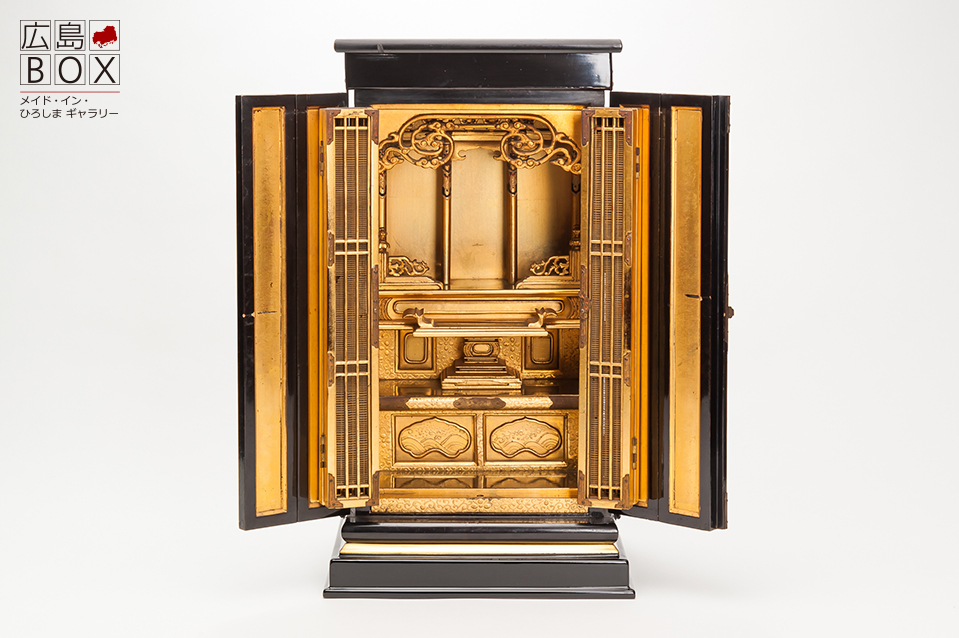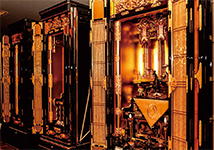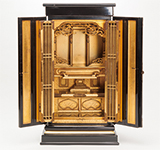Hiroshima Buddhist Altar 01[Traditional Crafts designated by the Minister of Economy, Trade and Industry]Hiroshima Religious Articles Commerce and Industry Cooperative

| Exhibitor (Manufacturer) | Hiroshima Religious Articles Commerce and Industry Cooperative |
|---|---|
| Address | In Mimuramatsu, 2-16 Horikawa-cho, Naka-ku, Hiroshima City, Hiroshima |
| TEL | (082)256-0001 |
| Job description | Manufacture of religious goods |
The “Hiroshima Buddhist altar” is a golden Buddhist altar manufactured in Hiroshima. In Hiroshima, where Jodo-shinshu Buddhism has been greatly worshiped since ancient times, many golden Buddhist altars have been manufactured. The techniques of “Hiroshima Buddhist altars” are based on the techniques of decorative metal fitting craftsmen, curving craftsmen, painters, etc., who settled in Hiroshima from Kishu at the beginning of the Edo Era. It is said that the techniques of “Hiroshima Buddhist altars“ were established because thereafter, a monk, named “Tonko” learned advanced manufacturing techniques for making Buddhist altars and Buddhist articles in Kyoto and Osaka and returned with them.
In the Meiji Era, many “Hiroshima Buddhist altars” began to be shipped outside of Hiroshima. In transporting Buddhist altars which are known for their somewhat bulkiness, it was good fortune that the Seto Inland Sea provided a means of shipment and the development of the industry. At the end of the Taisho Era, production volume of the “Hiroshima Buddhist altar” was the largest in Japan. Craftsmen manufacturing such “Hiroshima Buddhist altars” largely fell with the atomic bomb and the end of World War II, but craftsmen who survived gradually led to recovery of the industry and traditional techniques have continued to be passed down.

Golden Buddhist altars manufactured in Hiroshima (Hiroshima Buddhist Altars)
Miniature Buddhist altars






















